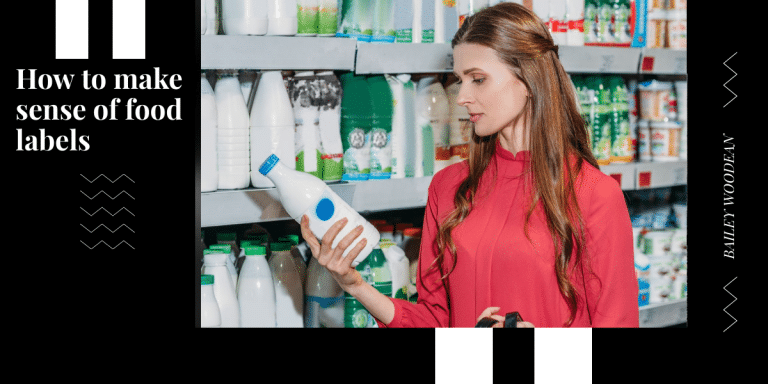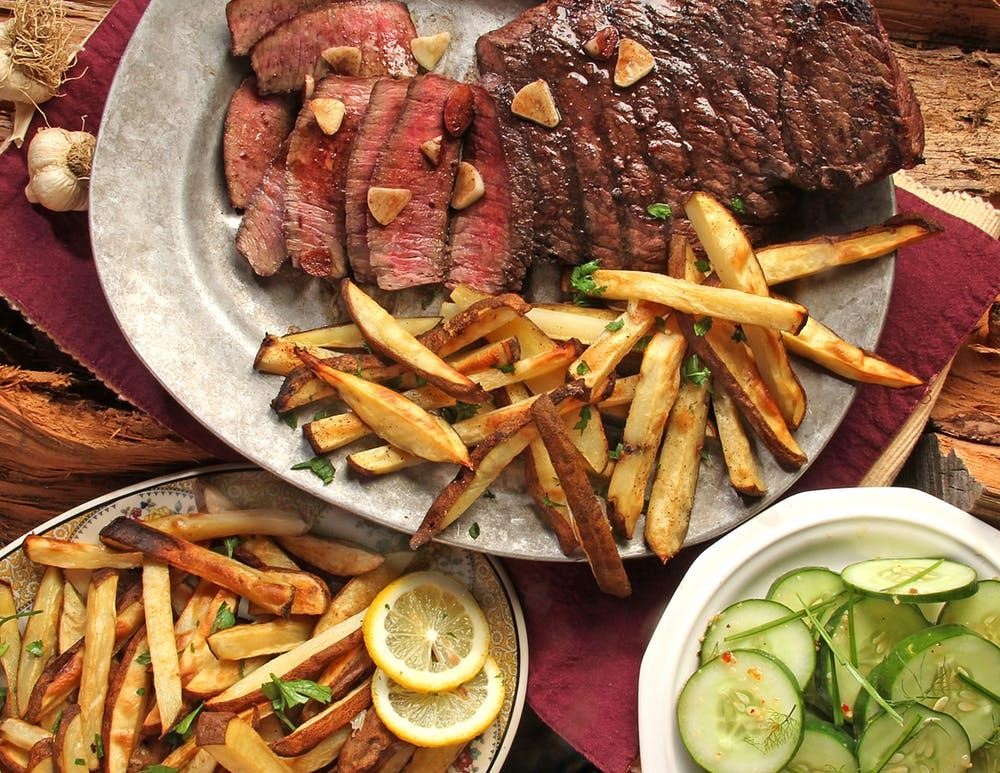
Have you ever found yourself grocery shopping or cooking and wondering what all the information in the nutrition label actually means? Or, do you see words like ”organic”, ”free-range”, and ”grass-fed” and don’t really understand what they mean? You’re not alone!

How to read a nutrition label
- The first thing you need to do is locate the nutrition facts label. You can usually find it on the back or on the side of the packaging. Though you shouldn’t rule out looking on the bottom or top of the package, either. Keep in mind that fresh foods such as produce, deli meats, and fresh meats will not likely have nutrition labels on them, though you can check.
- The second thing you will need to do is look at the serving size. Here, you will see how much a typical serving of this product is as well as how many servings are in the package.
- The next section to look at is the calories. The calories are important, especially if you’re on a low-calorie diet. You will also see a section called calories from fat. This section is the total calories from fat in the food. If you subtract the calories from fat from the total calories you will see how many calories remain from the rest of the ingredients.
- Continuing down the list of nutrition sections you should see carbohydrates, sodium content, protein, vitamins, and minerals, fiber content, sugar content, and various other nutrients. Next to each section will be an amount (usually in grams or milligrams). These measurements are important to keep in mind if you are a health-conscious person. The percentage amount (located next to the measurement) tells you what percentage of a typical 2,000 calorie per day diet that nutrient uses. For example, if a nutrition label says 25% next to the fiber content then that specific food has 25% of the fiber content for a typical 2,000 calorie diet.
As a general rule of thumb, you want higher numbers in the vitamins and minerals portion and lower numbers in the sugar, sodium, and carbohydrates portions.

Comparing food label terms
So, now that we know how to read the nutrition label, let’s try to make sense of the other confusing terms that are found on the packaging.
Organic
Organic products are generally produced using natural sources and substances including farming techniques. Organic products must follow certain federal guidelines concerning soil quality, pest and weed control, animal raising practices, and any use of additives according to https://www.usda.gov/media/blog/2012/03/22/organic-101-what-usda-organic-label-means.
Free-range
While this label is not federally regulated, it generally is used to inform the raising practice of the food. For example, eggs that are labeled ”free-range” are said to come from chickens that were contained in cages, at least not all of the time.
Grass-fed
Similarly to the free-range label, the grass-fed label refers to the raising practice of that particular animal. For example, beef products labeled ”grass-fed” often indicate that the cows were allowed to wander their fields and eat grass from the farmland. Most experts recommend looking for the 100% grass-fed label to ensure true humanitarian practices by the farmer.
Antibiotic-free/hormone-free
First, the ”hormone-free” label should never be found on poultry or pork products as it is illegal to give poultry and pigs hormones. The ”antibiotic-free” label usually referred to the lack of added antibiotics in the animal feed. However, if the farmer had to give the animal antibiotics for health reasons then that animal is required to be cleared of that antibiotic for a certain amount of time prior to slaughter. Therefore, all meat should be antibiotic-free anyway!
Know your labels and feel confident about the food that you buy and serve to your family.
